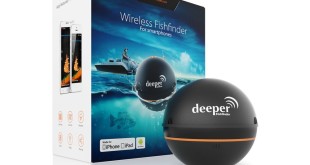 All the new high end laptops, including the Asus Zenbook (See our Review) and the MacBook Air all have SSD to vastly improve performance. Even if your notebook is five years old, it is still possible to vastly improve its performance. How vastly you say? How does 15 second boot times (for Windows 7) sound? Right, lets get started then.
All the new high end laptops, including the Asus Zenbook (See our Review) and the MacBook Air all have SSD to vastly improve performance. Even if your notebook is five years old, it is still possible to vastly improve its performance. How vastly you say? How does 15 second boot times (for Windows 7) sound? Right, lets get started then.
Here we have compiled a detailed article that will provide you the knowledge and tools you need to speed up your PC and sound a little smarter too!
• A little about data storage in your computer:
Your computer has two main storage methods, RAM and Disk Drives. RAM is not where your files are saved when you shut off your computer; so when you get a notification that your are running out of disk space, you are not running out of RAM… so don’t go around telling people that because those in IT will likely think less of you. RAM, or Random Access Memory, is where your operating system stores temporary files while you work on them. After you are done with your files, save them, and shut down your computer, everything in your RAM is deleted. Your harddisk or hard drive is where your data is stored and is probably the bottle neck of your performance.
• Hard Disk Drive (SSD) VS Solid State Drive (HDD)
Traditional disk drives use a disks that spins at speeds of up to 7200 RPM. The disks have data stored on them via magnetic fields and use a wiper arm to read the data. 7200 RPM sounds fast, but think about all those moving parts; to read something you need to move the wiper arm to the correct place and then spin the disk until the data is under the reader head. SSDs on the other hand are much simpler, a ledger says your data is at so and so address, then you send an electrical signal to transfer said data… no moving parts.
• What kind of SSD should I buy?
Currently this guide it being written on a PC equipped with the Samsung 850 EVO 500GB, which has been running great for over two years. Samsung drives are priced similar to other drives, however the EVO version comes with a 5 year warranty (10 years for the PRO!). The Pro versions use more expensive MLC NAND flash (versus TLC) which should technically last longer and offer slightly better performance (5-10%), however if you configure your drive according to our article this wont really matter and you can save some cash with the EVO model.
• How Big of a Drive Should I get? (Very Important)
Lets say you currently have a 240 gig hard drive and your using about 200 gigs of it, buy a 250 GB SSD right? Wrong, read on to find out why. So a long time ago drive manufactures decided to make a gigabyte equal to 1,000,000,000 bytes… well there are actually 1024 bytes in a kilobyte, and 1024 x 1024 (1,048,576) in a Megabyte, and 1024 x 1024 x 1024 (1,073,741,824)in a Gigabyte. So what happens is that they shiest you 73 Megabytes per gig. So a 250GB hard drive is (250 x 1,000,000,000) 250,000,000,000 bytes… which in the computer world is (250,000,000,000 / 1,073,741,824) or 232GB. Next issue if wear leveling (covered later in detail), basically you should keep 10% of your drive free, so now you are down to 209GB of space and your drive is basically full. Rule of thumb: If it is going to be more than 80% full, get the next larger drive.
• Installation – Requirements
So now you have your Samsung 850 EVO 500GB or Samsung 850 EVO 1 Internal SSD (MZ-75E1T0B/AM)
and your ready to install. Samsung Magician Software is great, however if your hard drive is formatted in GPT GUID Partition Table as opposed to MBR this may not work. To find out in Windows Use Windows+R to open Run, type diskmgmt.msc in the empty box and tap OK (or you can search for Disk Management). In the Disk Manager, right-click on the area next to your C:/ drive (usually Disk 0) and select properties from the drop down menu (IMAGE). From here, go to the “Volumes” tab and you will see the “Partition Style” there. If it is GPT, you will likely need to reinstall Windows from scratch, if it is MBR, you should be able to clone your drive with relative ease.
• Installation – Data Migration
If your drive old drive is a Western Digital, there is a free version of Acronis True Image which works great, if not then the Samsung Data Migration software should also work well. You will need an external USB 3.0 drive enclosure such as the [USB 3.0 & Tool-free ] Inateck 2.5 Inch USB 3.0 HDD SATA External Hard Drive Disk Enclosure avialable at Amazon for under $15, after you are done replacing your drive just use your old one in this as an external backup drive! In True Image, just select your target drive as the USB drive, your source as your C:/ drive, and the method as “proportional” if the drive sizes are different. If Samsung Migration or Acronis True Image fail you read the next section.
• Installation – Problems
We ran into a few snags during the installation and file migration process so we figured out solutions for them!
“Clone Disk Operation Failed” – Acronis AND Samsung Magician just hangs
You will need to open and admin command prompt and run check disk to fix disk errors.
1) Get to the Windows search by hitting either the key combination (Windows key + s) or go the search box in the Start menu, type in “cmd” (without quotes)
2) Right-click on “cmd.exe”, and select “Run as administrator”.
3) Click yes to the User Account Control prompt and then a black command box should appear.
4) Type the command “chkdsk /r” (without quotes).
5) You will be asked to schedule the volume to be checked on the next restart; type “y” and hit enter.
6) Restart you computer and allow it to fix your disk errors.
7) Attempt the disk cloning process again!
We have gone over the replacement of a notebook SSD in the ASUS Zenbook upgrade, so please check that out for details.
• Optimizing – getting the most out of your drive.
So hopefully you chose a drive that has plenty of space, because we need some. The first this you will want to do is install Samsung SSD Magician software and run it. Check your OS optimization and make sure that Defragmentation and Indexing is disabled, defragmentation can cause unnecessary wear on the drive. Next make sure indexing is disabled, however if you are using Outlook and want search to function you may need to add Outlook to the indexed locations via Windows “Indexing Options”. Finally Over-Provisioning, this is essentially unformatted space on the drive which is used by the SSD controller for wear leveling. We recommend that at least 10% of your drive is unallocated or set as Over-Provisioning space. You can use the Samsung SSD Magician software for this or Disk Management (diskmgmt.msc mentioned above). In the Disk Manager you would simply right-click on the Healthy Volume (C:) and select “Shrink Volume” from the dropdown menu.
• Signs of SSD Failure
SDDs can show signs of failure or can just stop working all together. If the memory is begining to wear or the drive is somewhat full you may experience times where Windows will freeze momentarily. If music is playing you may here the song skip or buzz (freeze on a note). You can solve this problem by deleting some files and increasing both your free disk space and your Over-Provisioning space. If this continues after freeing up at least 5% more in both areas it may be time to look into an RMA with Samsung. We have completed a couple of RMAs on older Samsung drives and were provided with refurbished drives that worked well.
 HypeSheet.com HypeSheet.com – Your Source for all that is Hype
HypeSheet.com HypeSheet.com – Your Source for all that is Hype





